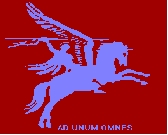However we can expect a similar event in Auckland. Shortly afterwards, we can expect our Northern Region to hold their AGM and Christmas get-together.
2014 Annual Reunion. As in recent years, this will be held in Rotorua, and it is being organised by the same committee as in 2013. THe reunion will be held over the weekend of March 15 and 16.
Saturday morning saw us embus for the Agrodome, wherein we saw the many different breeds of sheep on display, along with traditional shearing skills, and outside, the mustering skills of the border collies were also demonstrated.
Following lunch a short bus trip took us to ‘Wingspan’, a haven and rehabilitation centre for sick and injured raptors, typically the New Zealand falcon, where the majority of their patients are prepared for release back into the wild.
Returning to the RSA, we dined, and then toasted the Queen and Absent Friends. Before and after dinner we were entertained by Sue Morrison and three of her musical friends with songs of the 40s and 50s. After dinner we were addressed by our guest-of-honour, Judge Chris McGuire who as an ex-NZSAS officer, and also as Honorary Colonel of the 6th Hauraki Battalion Group since 2005, had useful comments on the essential attributes of an Airborne soldier. These were that
1. He should be of good but not extreme intelligence, so that he could fully appreciate the situation he is put into, but without wasting time in over-analysing it. Not the sort of stuff we expected to hear initially, but on reflection we could sense the value of these remarks.
One question that was put to Chris when we invited him to address us was for his views on the relevance of organizations such as ours in the modern world, particularly in view of the recent dissolution, from dwindling numbers, of the 28th (Maori) Battalion Association.
Again his remarks gave us much food for thought, when he stated that we, and organizations like us, stood, albeit only subconsciously, for the personal qualities of decency, honour, good humour, honesty, excellence, tenacity and fair play. These were of course in stark contrast to so much of the trivia that the media feast upon nowadays, and to the qualities that were manifest in most of the people that he came into contact with in his daytime occupation as a District Court Judge.
Sunday morning saw the customary ceremony of remembrance at the Cenotaph, including the wreath-laying by President Frank Clark and followed by the march-past with Davy Morrison as our standard-bearer and Colonel McGuire taking the salute.
On Remembrance Day, November 11th, 2012, Frank Clark and Roy Tilley had traveled from Wellington and met with six of our Auckland members to parade our standard and to take part in the Service of Remembrance at the Auckland War Memorial Museum.
This was the first official engagement of the Colonel-in-Chief in his recent week-long tour of New Zealand as part of the Queen's Diamond Jubilee celebrations. Despite the inevitable bureaucratic hurdles, we were delighted to meet and chat to the Colonel-in-Chief, who was wearing our airborne wings on the right shoulder of his uniform of Honorary Air-Commodore-in-Chief of the Royal New Zealand Air Force.
We in New Zealand are fortunate to have as our Governor-General and Patron of BAFNZ Inc, Lt-Gen Sir Jerry Mateparae, who saw airborne service in the NZSAS. In God's good time we will also have an Airborne King. What more can we ask?
On the following weekend we also paraded our standard at the Remembrance Day Service at Wellington Cathedral, in company with those of the Royal New Zealand Navy, eleven battalions of the New Zealand Army, four squadrons of the Royal New 'Zealand Air Force and the NZ Police, Our standard-bearer was President Frank Clark with Jim Higgins and Roy Tilley making up the colour party.
Sunday March 27th The National Annual General Meeting was held at the Devon Hotel after the parade.
Jack’s funeral took place at 1.00 pm NZST on Tuesday 21st December with a capacity congregation of approximately 700 at Wellington Cathedral. Amongst that congregation were ten members of British Airborne Forces NZ Inc.
The photographs below were taken at the time of the funeral and are copied here by courtesy of Frank Clark and of Ian Tilley Photography.
On March 27th 2011, after a service of remembrance at St Mary's Cathedral in New Plymouth, a plaque in memory of Jack Howard was unveiled by his father Roger Howard in the presence of the rest of his family and of the members of British Airborne Forces NZ Inc who were attending their annual reunion. This plaque was an addition to the existing memorial to Pte Richard Absolon also of 3 Para, who was killed in the Falklands in 1982. As well as the wreath laid by the BAFNZ, another wreath was laid by close friends of the Howard family. Mae Clark's photographs of this ceremony are shown below.
The eulogy delivered at Jack's funeral is shown below. To no-one’s surprise, Jack was always particularly reticent about his activities at Arnhem, so when his family found amongst his papers, a report entitled ‘My Life in Wartime’ they very kindly made it available as the basis of the following eulogy, delivered at his funeral:
“Jack was one of our earliest members and he filled a number of positions in this organisation including National Secretary and National President. Jack was devoted to the British Airborne, and until his eyesight started to deteriorate in recent years, he was frequently busy at his computer, producing material for our various functions, such as newsletters, place mats, membership cards and Christmas cards.
We all knew of his involvement at Arnhem but he was always very reluctant to discuss it in any detail. To the point that when some one once asked him straight out,
‘What did you do at Arnhem, Jack?’
His response was:
‘I dug a great big hole and sat at the bottom of it, till it was all over’.
“Of course we all realised this was less than the truth, but now, thanks to papers from Jack’s files that his son Chris has copied for me, I can now tell you just what Jack’s military service in World War II consisted of, and just what he did do at Arnhem.
“In expressing our deepest sympathy to Maureen and the rest of Jack’s family, we pay this tribute from British Airborne Forces (NZ) to one of the last three surviving paras from Arnhem in New Zealand.
“I registered for military service in 1941 but was not called up for service till September 1942. My service number was 14269321.
“I joined the Royal Corps of Signals at Prestatyn, North Wales at the Second Operators Training Battalion. Half way through my training as an Operator, Wireless and Line, I was posted to Divisional Signals of the 42nd Armoured Division at Scarborough.
“The Division took part in a military exercise in England, called ‘Spartan’ which took us from the North of England down to Somerset. Later in 1943, the Division was disbanded so some of our chaps volunteered for parachute training.
“After a toughening up period at Hardwick Hall in Derbyshire, we moved to Ringway, now Manchester Airport, to train as parachutists. We started with three jumps from a balloon, and then five from a Whitley bomber, known as a flying coffin. These five were through a hole in the bottom of the aircraft. After completing these eight jumps, I was given my wings.
“I was then posted to 1st Airborne Division Signals Squadron at Caythorpe in Lincolnshire. After a few weeks in January 1944, I was posted to the 4th Parachute Brigade, K Troop at Whithcote near Oakham in Rutlandshire. We did many parachute training exercises including being sent back to Ringway for a conversion course for jumping out of the doors in a DC3, known then as the Dakota.
“We were stood to on D-Day and had many briefings after this. I remember one was for Caen, but this was cancelled and the RAF bombed it with their Lancasters. Other briefings were also cancelled due to the rapid advance of the 2nd Army or for other reasons we were not aware of. (He also serves who only stands and waits)
“In August of 1944, the 1st Airborne Division was briefed for an operation in Holland. The 4th Brigade were going to drop at the Bridge at Grave, the Air-Landing Brigade were to land at Nijmegen and the 1st Parachute Brigade were to drop at the bridge at Arnhem. The object of this operation was to capture the three bridges.
“However, that was cancelled and prior to September we were briefed for a new operation for Arnhem again, called ‘Market Garden’, but they were going to use the Airborne Corps which consisted of the 1st Airborne Division and two American airborne divisions, the 82nd and the 101st.
“The Airborne Corps was under the command of General Browning, known as ‘Boy Browning’ and who was married to the author, Daphne du Maurier.
“Due to shortage of planes, the 1st Airborne Division was split into two. The 1st Parachute Brigade and half the Air-Landing Brigade were dropped on September 17th with the 4th Parachute Brigade and the rest of the Air-Landing Brigade arriving on the 18th, there having been a delay due to the foggy weather in England.
“I was part of this second landing at Ginkel Heath, near Ede, and it seemed just like an exercise to me, everything appearing peaceful. The next morning, September 19th, we moved off to a wood adjacent to a railway and Brigade HQ was set up.
“I was the third operator for Brigadier Hackett. Whilst we were in the copse, gliders had landed in the adjacent field and German fighters came over and started strafing us. A few of us took shelter under a trailer and when the planes left, we crawled out and then realized that the trailer contained jerry-cans of petrol!
“Before leaving England we had been briefed to expect only boys and old men defending Arnhem. Unfortunately this was not correct and other information having been ignored, the situation was very different. The first principle in warfare is never to underestimate your enemy.
“Soon after, I was asked to go to the Command Brigade wireless set which worked to the three battalions, the 10th, 11th and the 156th. The order was given to the 11th Battalion to move off and go into Arnhem by the lower road by the river, to try to join up with the 2nd Parachute Battalion. Unfortunately they didn’t meet.
“We at Brigade HQ moved off as pedestrians through a subway under a railway, jeeps moving along the railway. We were informed that the Germans were not far away so we got a spurt on and met up with the Border Regiment. I joined one of them in a trench with a Bren gun and became his No.2.
“We were mortared considerably by the Germans but they did not attack our position physically. My companion was a member of the Border Regiment Air-Landing Brigade and had been to North Africa and Italy.
“He said that we would never get out alive.
“I told him he was a ‘Happy Chap’ and that this was my first operation, so I didn’t want to hear what he was saying. He received a superficial wound from a piece of shrapnel from one of the mortars.
“I stayed with the Border Regiment until September 25th. By this time our 48 hour rations had disappeared, so when we received a hot meal, it was very welcome. I have no idea what the meat was!
“We were then told we were moving back over the river. We decamped in line, following a white tape to the Neder Rhine where we embarked onto boats belonging to the Canadian Engineers. When we reached the other side, I was too weak to climb out of the boat and was lifted out.
“We walked to a Field Ambulance camp where we got a nice mug of tea and then we went by lorry driven by the Americans to Nijmegen where we stayed in a school for a couple of days and where we were strafed by German fighters.
“We left Nijmegen in a large convoy to a police barracks at Louvain in Belgium. We were given the afternoon off and went sightseeing in Brussels where I was introduced to Chanel No. 5.
(Jack doesn’t say who by!)
“After a few days we flew back to England when I was given my first stripe and got paid. We flew to Withcote in Rutlandshire and picked up our new uniforms including American shirts and ties. This caused some confusion as we received salutes from the other ranks who mistook us for officers. On moving back to Lincolnshire we stayed in training with the new wireless sets that had been issued, very much better than the old ones.
“We stayed there till May 1945 and celebrated VE day in Copenhagen where we were taking over from the German Occupation. On returning to England I joined the 6th Airborne Division at Bulford Camp in Wiltshire, and was then posted to the 3rd Parachute Brigade Signal Section. The Division was meant to be sent to the Far East but the Japanese surrender stopped that. I celebrated VJ Day in Staines, Middlesex.
“In September 1945 the 6th Airborne Division was sent to Palestine where I stayed till 1947. I was promoted to corporal on 7th March 1946. Whilst serving in Palestine, I was at Gaza, Sarafand Camp and then Haifa, on Mt Carmel for the last few months.
“I was the Division Security Corporal for the Division. The duties included monitoring the wireless sets of the Division to check for bad security, and I also arranged for low grade code to be circulated to the Division.
“I was then due for release at the beginning of 1947. With other personnel we were sent to Port Said for embarkation on the transport ‘Highland Princess’ which took us back to Toulon where we entrained for Calais and then over the straits to Dover. We were then sent to Aldershot for processing and I was handed my civvy suit etc on 27 March 1947. I then went back to working for Cable and Wireless Ltd.
“On November 15th 1950, I joined the Territorial Army, the Middlesex Yeomanry, which was an Airborne Division Signal Squadron. My new service number was 22537034 and I was given the rank of corporal. I was soon promoted to sergeant and had my own troop which consisted mainly of National Servicemen finishing their commitment. After serving six years and 336 days, I decided to leave, on 16 October 1957.
“My trade in the Territorial Army was Operator, Keyboard and Wireless AIII, along with my other trade of Operator, Wireless and Line BIII.
“My decorations consist of the France and Germany Star, the General Service Medal with the clasp for Palestine 1945/1948, and the 1939/1945 War Medal.
“Fare well, my friend.”
Remembrance Day Service, Wellington Cathedral November 14th.
We held our 23rd Reunion and AGM at the Devon Hotel, New Plymouth over the weekend of March 25/27.
Our next meeting in the Central Region will be on Friday November 15th at the Fireman's Arms, 313 Jackson Street, Petone at 1100 hours. Although in previous years we have paraded our flag, along with those of other military units, at a Remembrance Day service at St Paul's Cathedral, Wellington no plans have been made for such a service to be held in 2013.
Recent Events 2011 - 2013
2013 Reunion
2. He should be somewhat mentally unstable so that he can switch to plan B in plenty of time to still achieve success.
3. He should be of low self-esteem so that fear of failure in the eyes of his team-mates drives him to succeed.
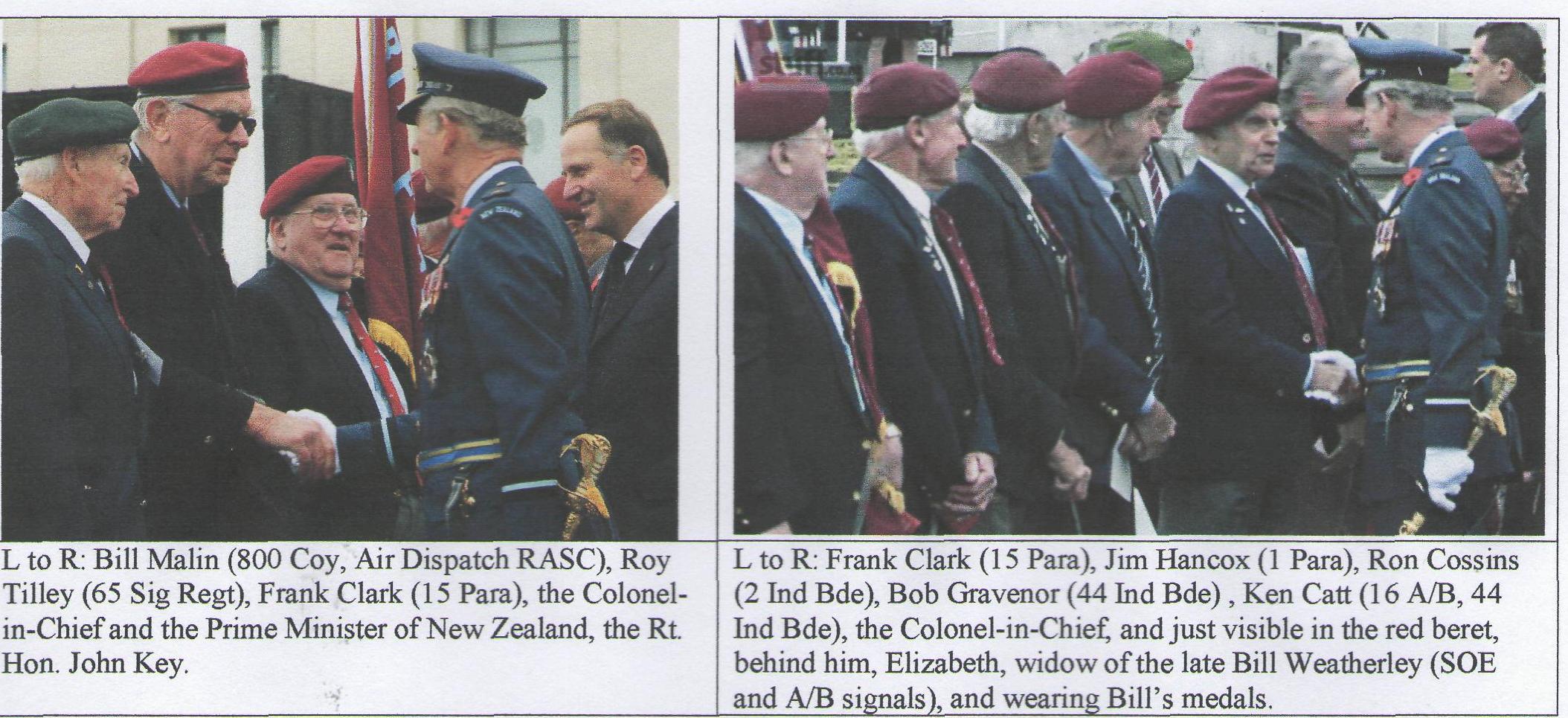
2012 National Reunion
After this tour, we repaired to the RSA for pre-dinner drinks and then dinner. Our guest speaker this year was Captain Kajiman Limbu MC of the Royal Gurkha Rifles, a company of which is currently exercising in the Tekapo area on ‘Exercise Pacific Khukri’. Captain Limbu is parachute-trained so was particularly welcomed by our members. He comes from a small village in the foothills of the Himalayas called Lukuwa in the Tehrathum District. He joined the British Army in November 1989, and completed his Basic Training at the Ghurka Depot in Hong Kong. Shortly after joining the 7th Duke of Edinburgh’s Own Gurkha Rifles, he was selected for parachute training and quickly earned his wings.
As a young soldier one of his first jobs was patrolling the borders of Hong Kong looking for illegal immigrants. After the return of Hong Kong to China in 1997, Captain Limbu completed tours of Brunei, Malaysia, Canada, UK, USA, Sierra Leone, three times in Bosnia and three times in Afghanistan. He was awarded the Military Cross for saving the life of an American officer whilst under intense fire outside Kabul.
He is married to Sunita who is an integral part of both the Battalion and the Company. They have a daughter, Medhawi (12), and a son Riwaj (9). Captain Limbu’s brother is a Colour Sergeant, commanding the snipers of 2nd Battalion, Royal Gurkha Rifles.
In his address to us, Captain Limbu spoke of the history of the Gurkhas, and their association with the British Army going back some 200 years. He also discussed the recruitment, selection and training of young Nepalese men, who did not become Gurkhas until their training was completed and they had passed out.
Apparently their numbers are now down to about 3000 men with a serious risk that their association, with its attendant financial advantages to Nepal as a country, could be discontinued in the near future.
After his address Captain Limbu was presented with one of our shields by our President, Frank Clark as shown in the photos below.
On the Sunday morning, we held our traditional wreath-laying and service of remembrance at one of the memorials in the Government Gardens, at which Frank Clark and Captain Limbu laid our wreath. Photos below were taken immediately after this ceremony and show our guest and all our members who attended.
The National Council of British Airborne Forces (NZ) would like to express and record their appreciation of Captain Limbu’s visit, and thank the British High Commission for making it possible. We trust that we may see him again.
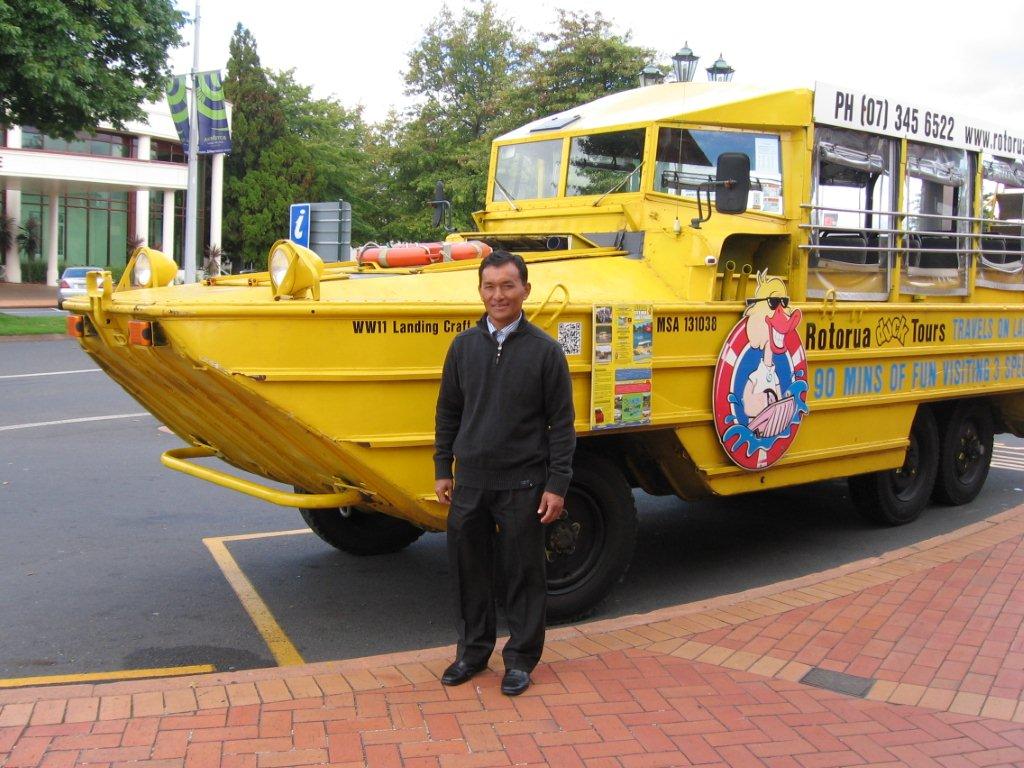
Watson, Mae Clark and Frank Clark.

BAFNZ shield.
23rd National Reunion
The 23rd Reunion and National AGM was held in New Plymouth at the Devon Hotel, from the 25th to the 27th March 2011.
The annual dinner at the Devon Hotel was followed by an address by The British High Commissioner, Mrs Vicki Treadell, whose topic was 'Facing the Challenges of Crises, from Terrorists to Earthquakes'.
Our usual parade for a remembrance service took place at St Mary’s Cathedral, the service concluding with the unveiling of the addition to our Airborne Forces Memorial in memory of Private Jack Howard, 3 Para, by his father Roger Howard. Our wreath was then laid at the BAFNZ memorial in the churchyard by Mrs Treadell and our President. Photographs of this occasion will be found below.
John (Jack) Howard
Pte John William Rangitane Howard, 3rd Battalion, the Parachute Regiment, Brigade Reconnaissance Force, was killed in action in Afghanistan on December 5th 2010, at the age of 23. Jack was a Kiwi by birth and his family live in Wellington. 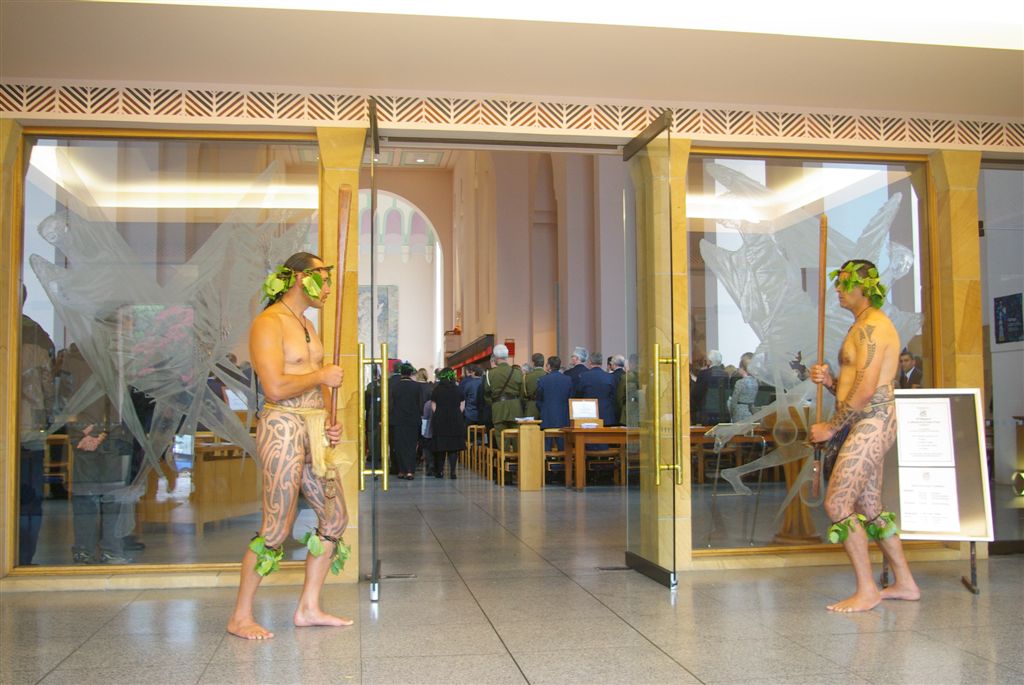
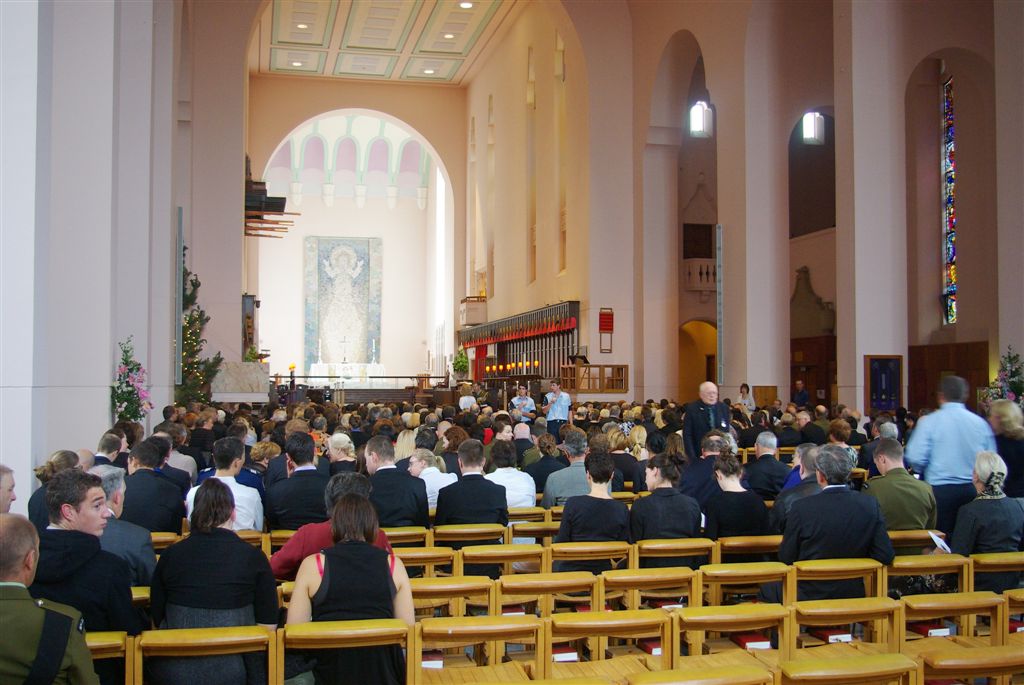
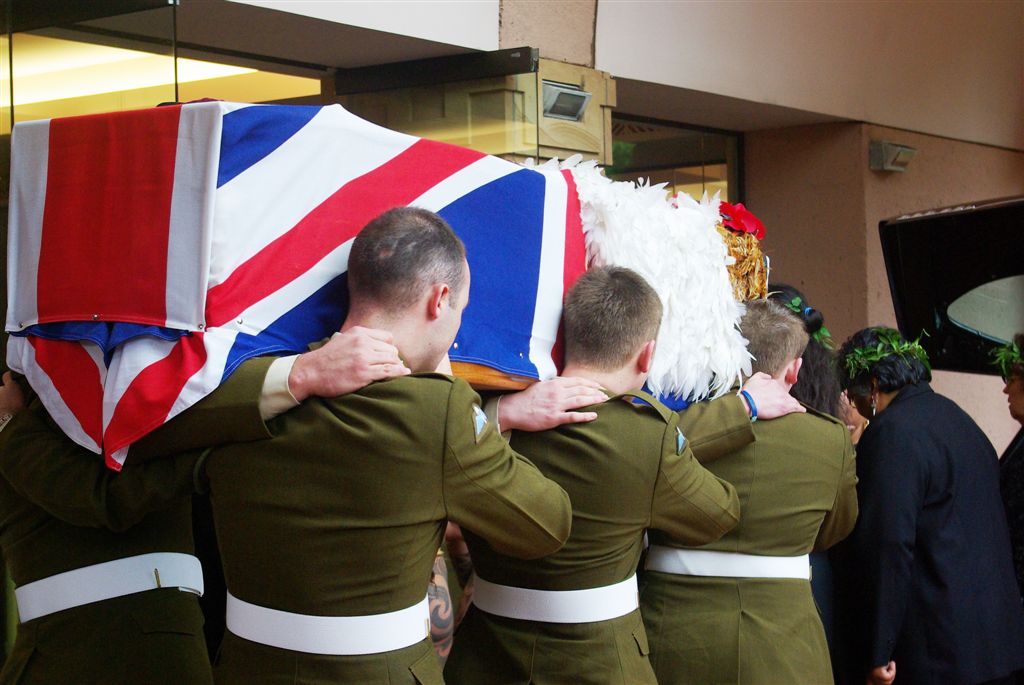
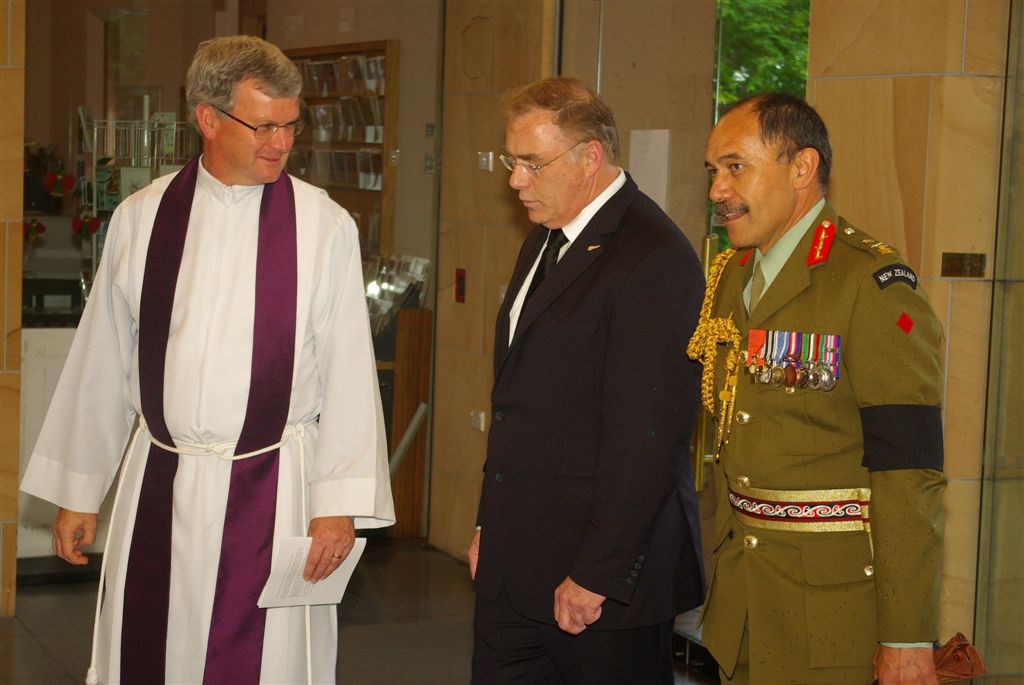
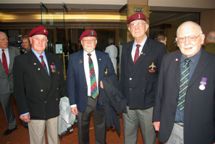
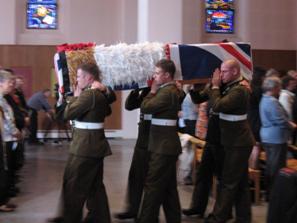
the Minister of Defence, Wayne Mapp and Lieutenant-General
Sir Jerry Mateparae, Chief of the Defence Force.
(l to r) Joe Baker (in grey suit),
Jim Higgins, John Watson, Roy Tilley, Bob Badrick.
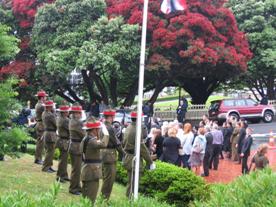
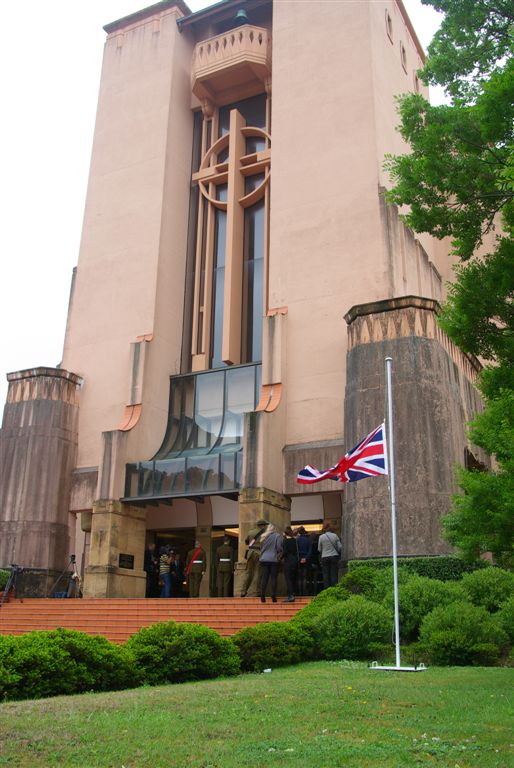
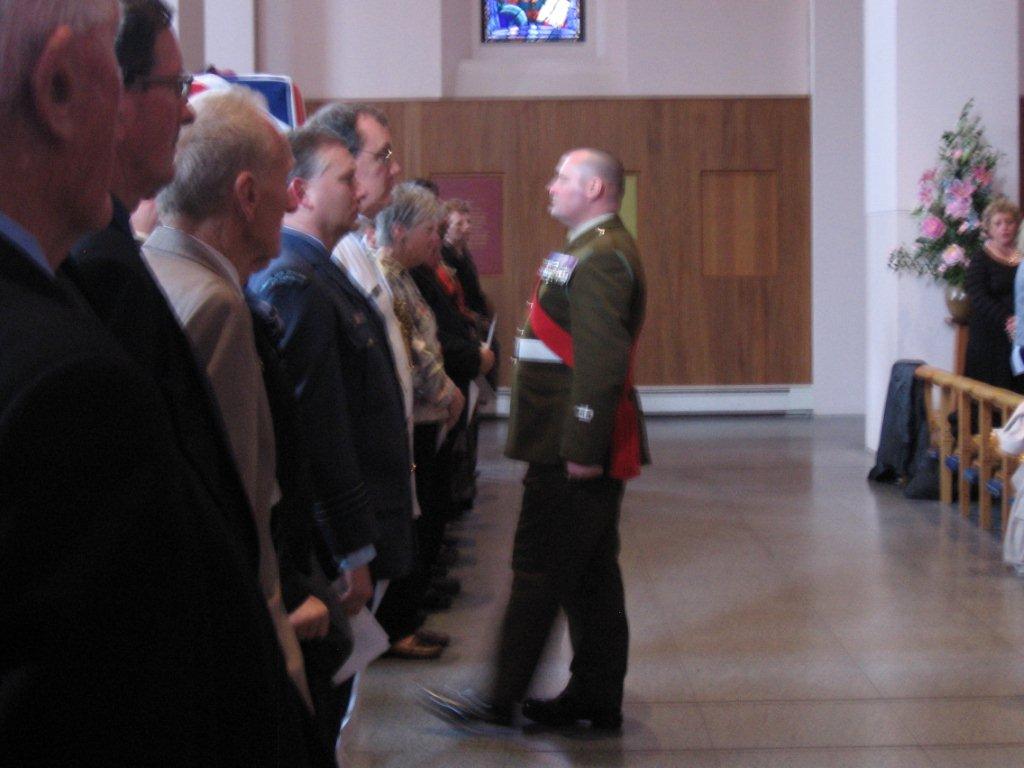
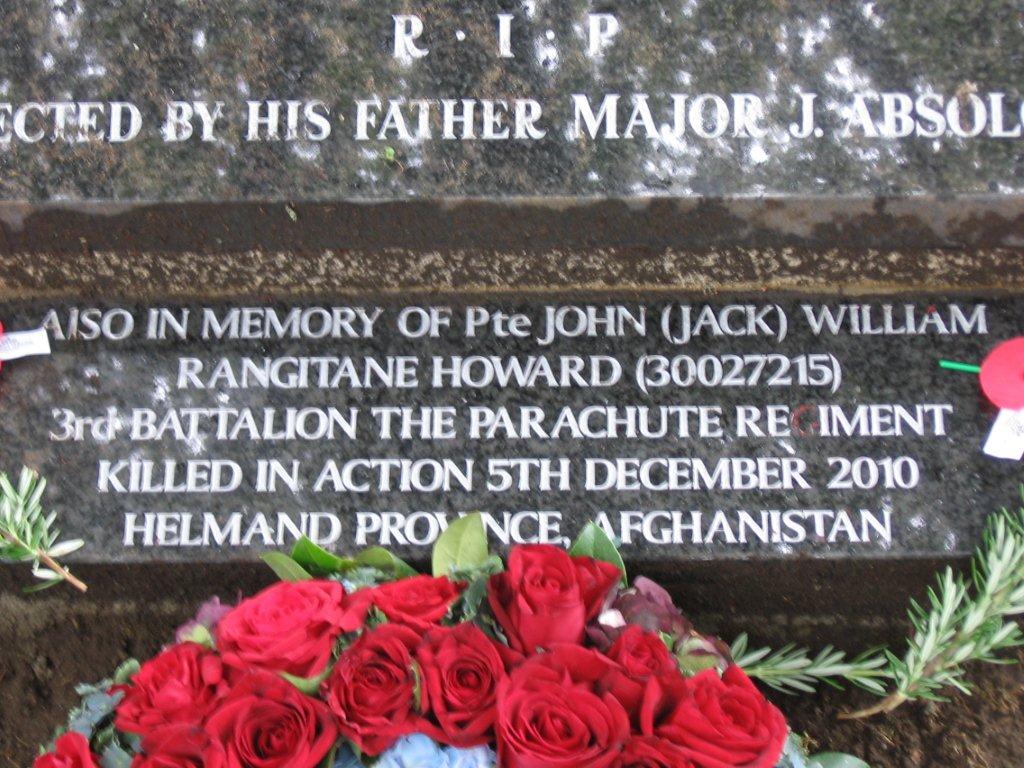
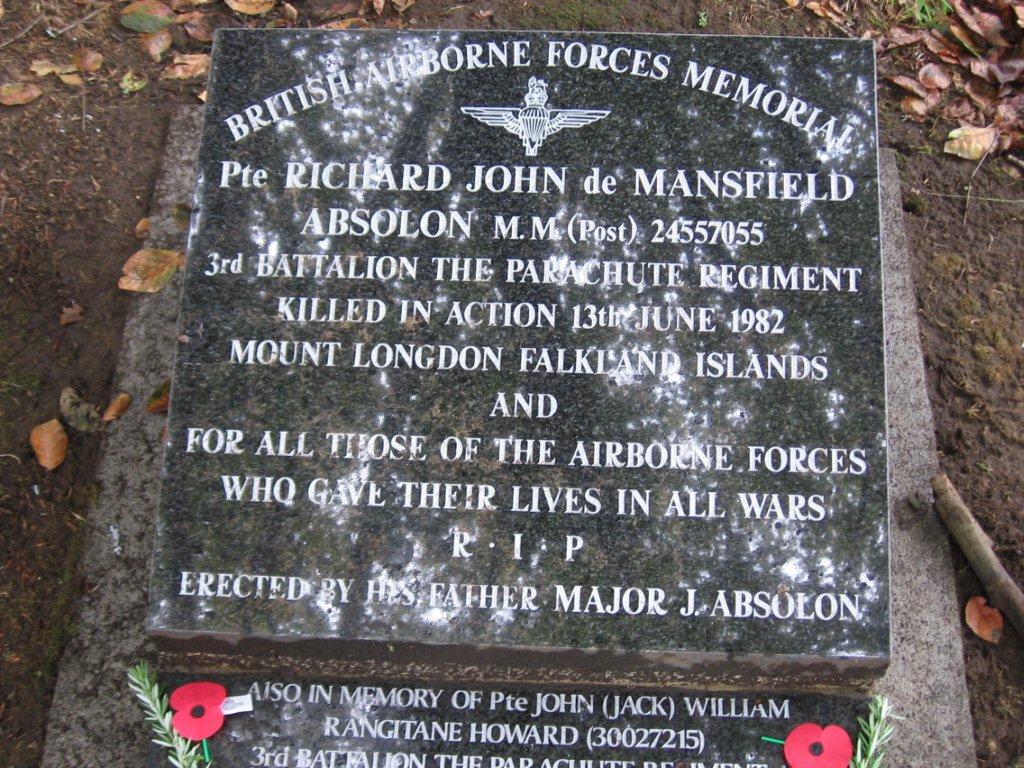
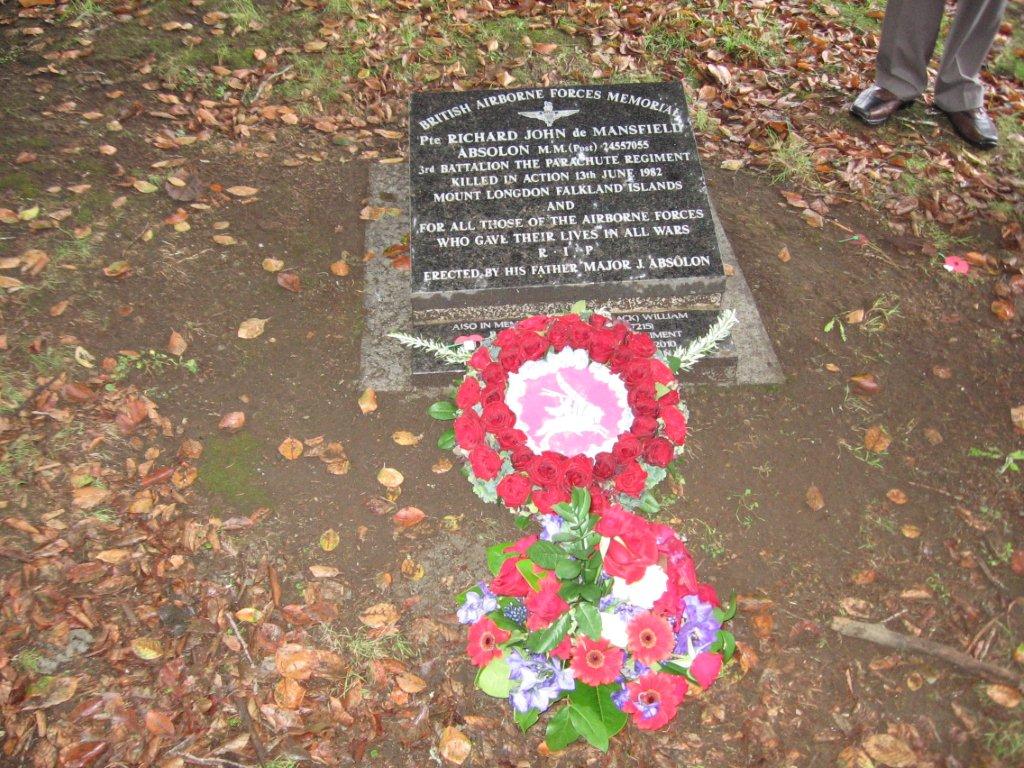
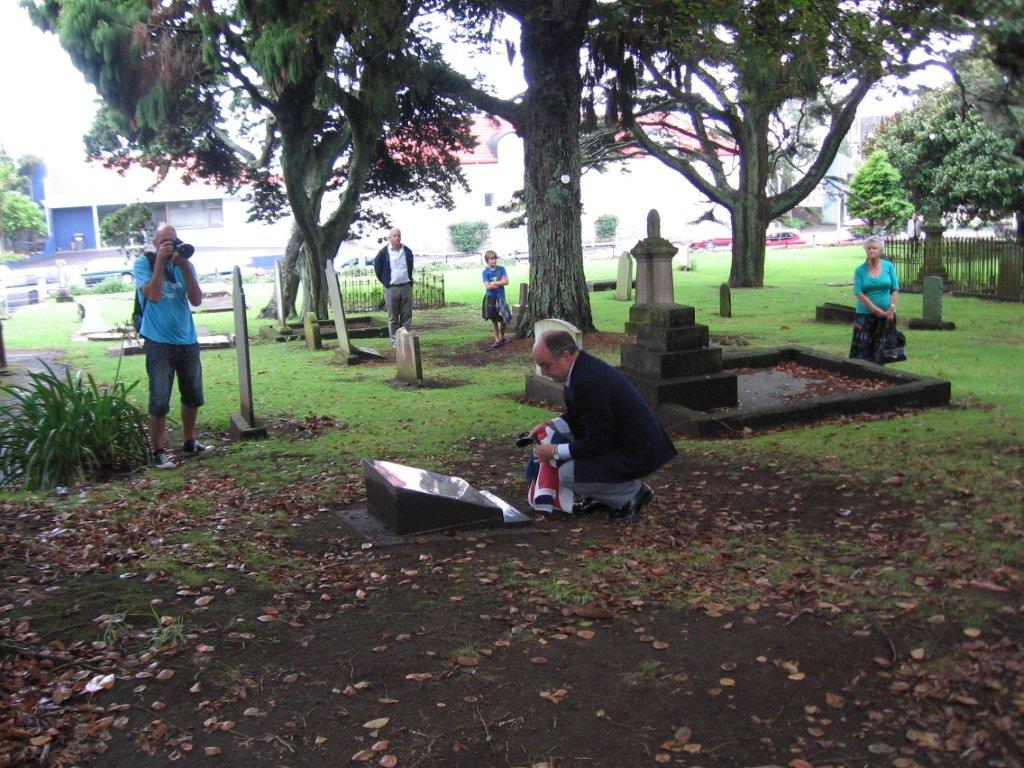
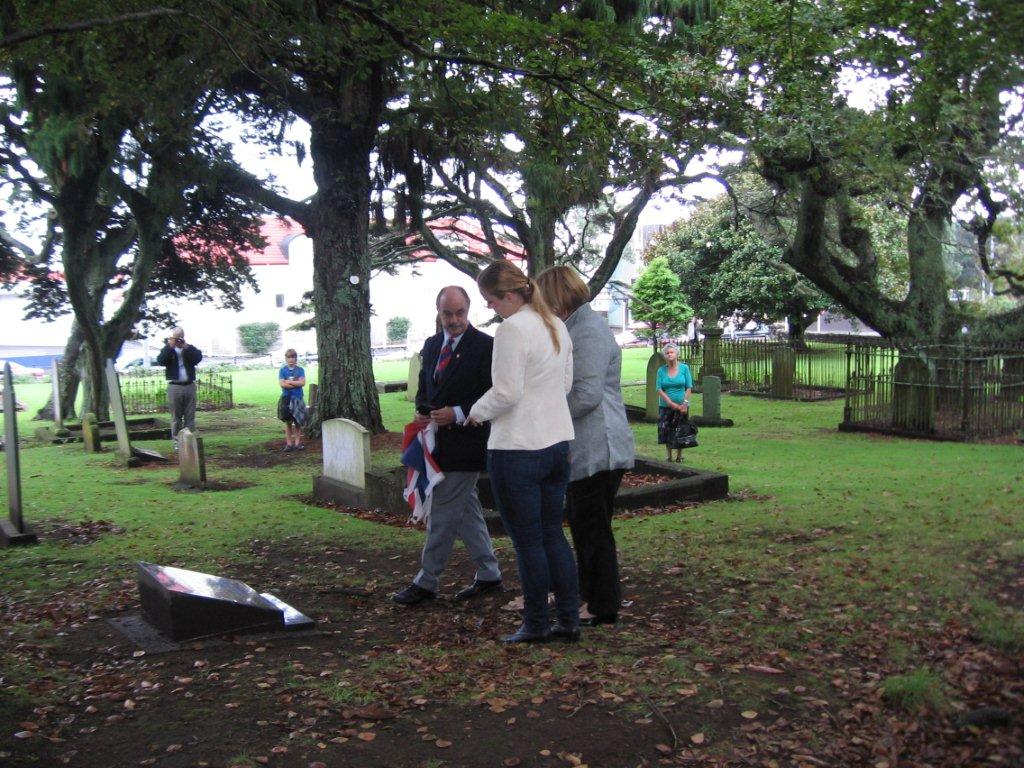
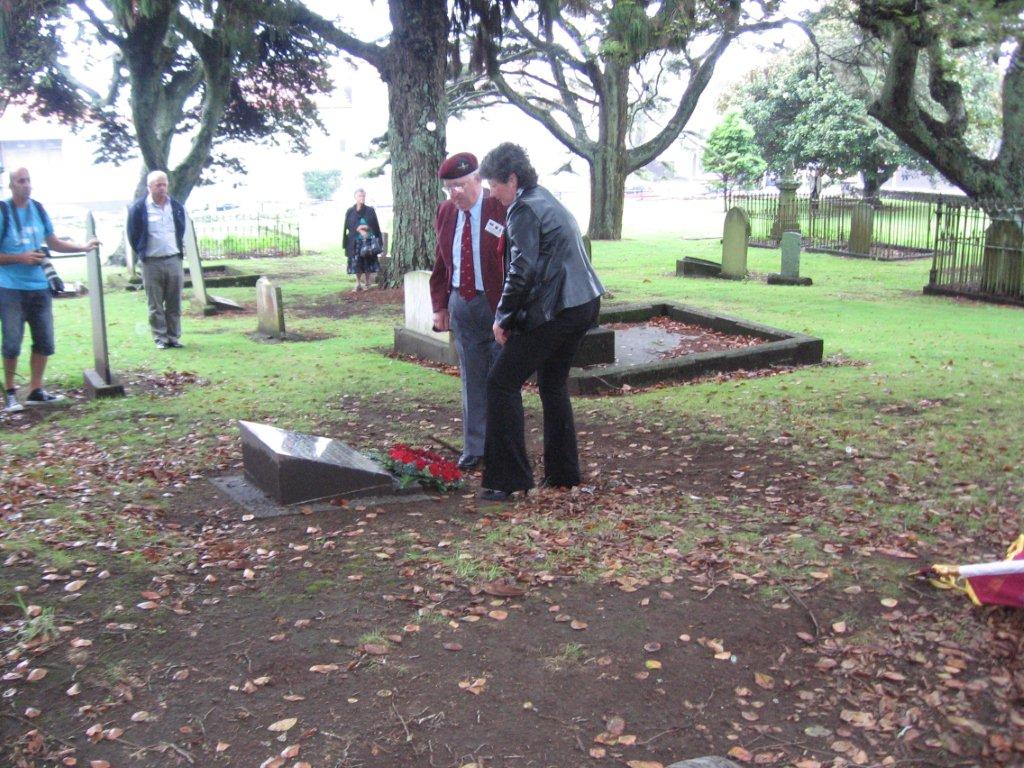
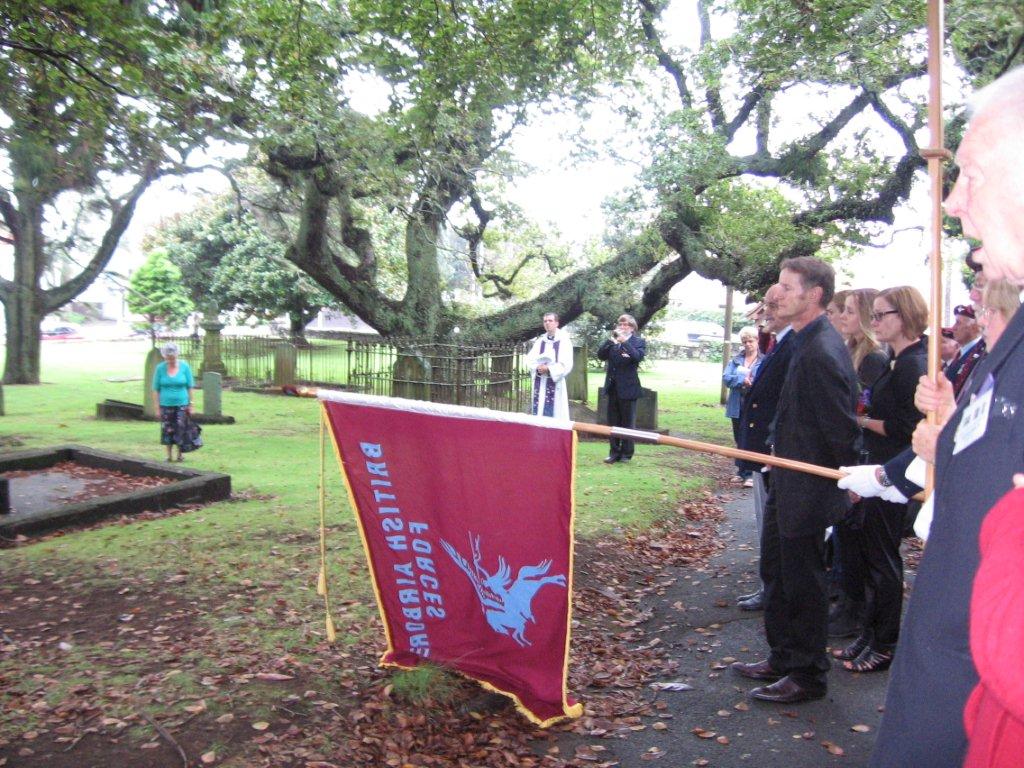
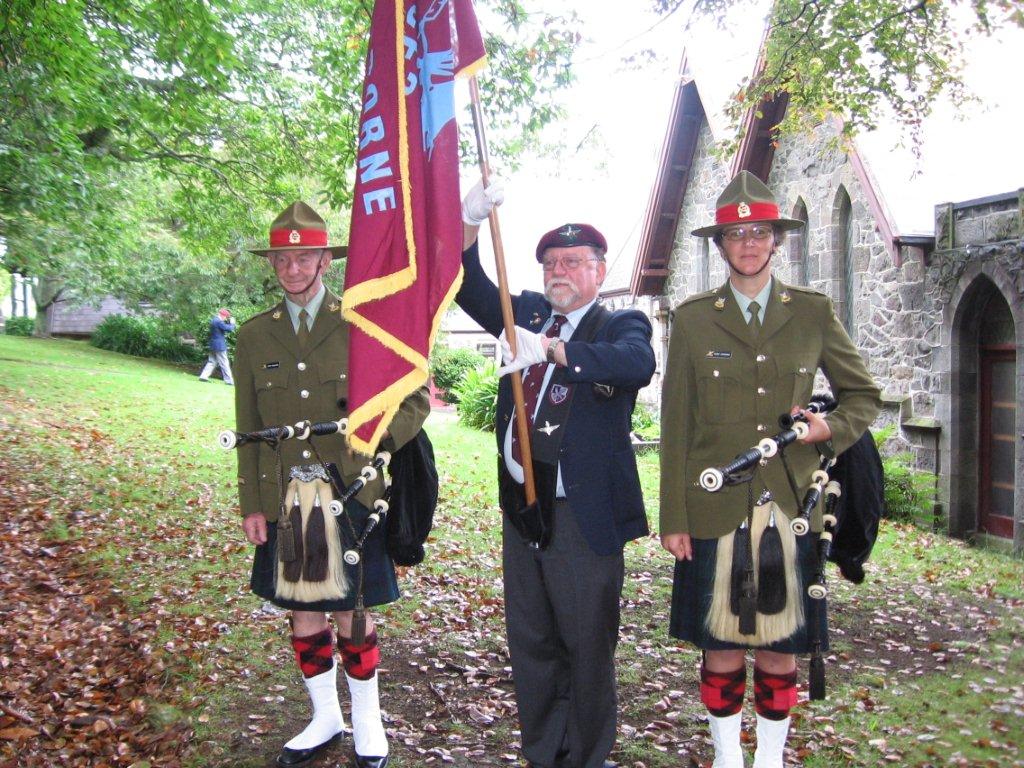
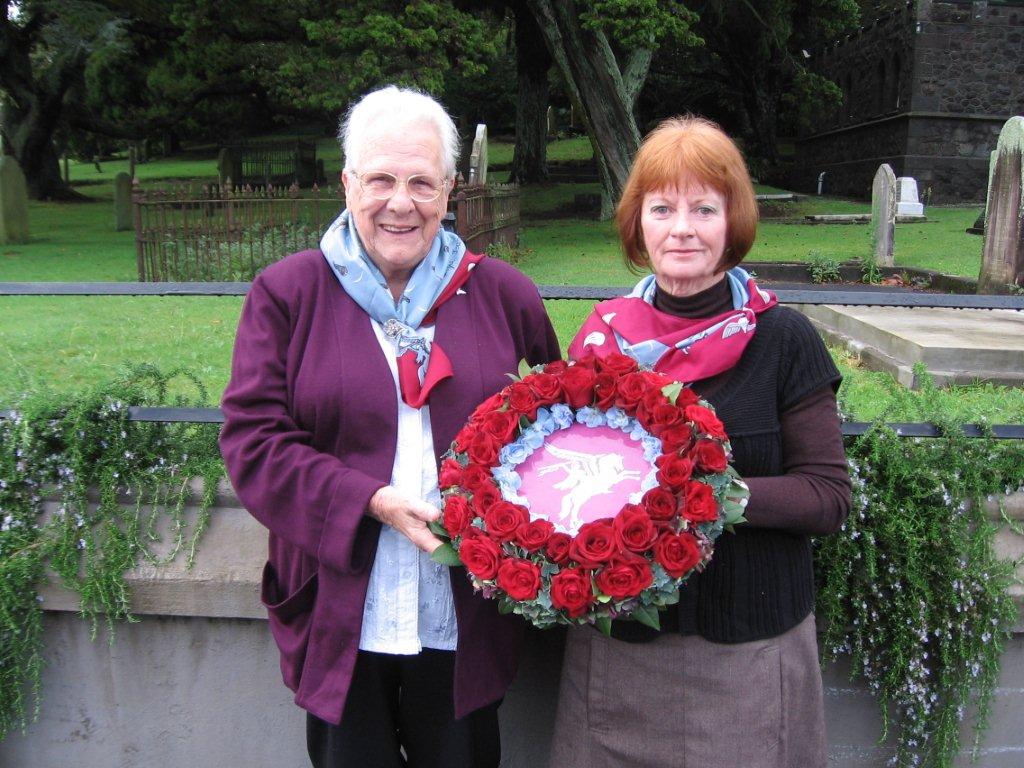
Dean of St Mary's Cathedral, Jamie Allen
standing alongside.
BAFNZ wreath.
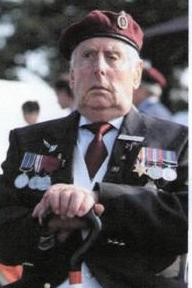
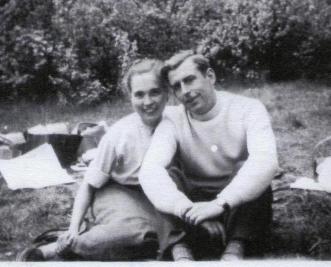
“When war was declared against Germany in September 1939, I was 16 years of age and was working in the City of London as a messenger with Cable and Wireless Ltd. I delivered telegrams in the City during the daytime and in the West End during the evening.MY LIFE IN WARTIME, by Jack Sherlock.
For the record, the other Arnhem veterans known to be surviving in New Zealand are John Bayley, Doug Thorley and Bill Grounsell who fought on the ground, and Bill Sparks who flew Stirlings for aerial re-supply. (Unfortunately, Bill died in Christchurch earlier this year, 2013. Our sympathies to his family and friends.).
If anyone knows of any other surviving Arnhem veterans here, please do let your secretary know.
Slow marching up and down the aisle of the Cathedral to Handel's 'Scipio' and Roever's 'Highland Cathedral' was an incredibly moving experience, especially having endured about three hours of rehearsals during which we had to quickly remember long-forgotten parade drills and to learn new ones.
And I don't care what the modern soldiers say, you can't do decent drill in rubber soles. Bring back the old ammunition boots!
Annual Reunion, New Plymouth, March 25-27 2011.
Our Annual Dinner was held on the Saturday evening in a dining room decorated as usual by Mark Rhodes with Airborne insignia and other memorabilia as seen in the photos below.
The 23rd Reunion and National AGM was held in New Plymouth at the Devon Hotel, from the 25th to the 27th March 2011.
The dinner was followed by an address by The British High Commissioner, Mrs Vicki Treadell, CMG MVO, whose topic was 'Facing the Challenges of Crises, from Terrorists to Earthquakes'.
After socialising and dinner, Mrs Treadell delivered her address which covered her responses and actions in November 2008 when a group of terrorists attacked a number of hotels in Mumbai where she was Britain’s Deputy High Commissioner. She spoke enthusiastically of the support she received from her team at the High Commission, when striving to locate, assist and repatriate British citizens who in many cases were injured in the attacks and who also had lost all their passports and other documents. Other important considerations she had to contend with, included the need to maintain contact with, and the support of the news media. She also referred to the need for the ‘upward management’ of her superior, the British High Commissioner, many miles away in Delhi, getting his support and endorsement for her actions.
On her appointment to be High Commissioner in New Zealand in 2009, she reasonably expected a totally different type of work environment, but after the Christchurch earthquake in February this year, she found herself doing much the same things again. She obtained a seat on the first RNZAF C-130 Hercules heading to Christchurch and again set about aiding the injured British citizens, just as she had done three years previously, though this time, fortunately, in a far less hostile environment.
